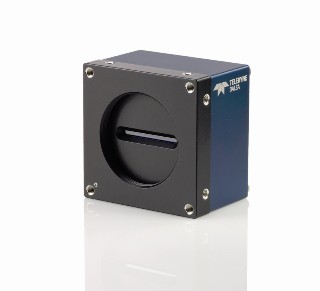Oct 17 2014
Teledyne DALSA, a Teledyne Technologies company and global leader in machine vision technology, today introduced its Piranha4 2k quadlinear line scan camera featuring red, green, and blue (RGB) outputs plus a Near Infrared (NIR) channel for multispectral imaging.
 Proprietary CMOS Sensor Design Delivers Spectrally Independent RGB+NIR outputs
Proprietary CMOS Sensor Design Delivers Spectrally Independent RGB+NIR outputs
The quadlinear Piranha4 is built around Teledyne DALSA’s advanced CMOS image sensor design. Wafer-level dichroic filters enable spectrally independent RGB and NIR outputs, enhancing detection capability for a wide range of machine vision applications, including print, bank note inspection, electronics manufacturing, food and material sorting.
“Our Piranha4 multispectral camera extends line scan capability beyond color imaging,” commented Xing-Fei He, Senior Product Manager. “The NIR channel enables OEM in print inspection, electronics manufacturing, and food and material sorting to easily detect defects they couldn’t see before. Some customers are currently using one trilinear camera (for color imaging) with a monochrome camera (for NIR imaging) in a system. Now they will be able to replace two cameras with one quadlinear multispectral camera and realize significant cost-savings.”
The new RGB+NIR Piranha4 multispectral camera is available in 2k resolution, with 14.08 micron pixel size and delivers a maximum line rate of 70 kHz. In addition to its multispectral capability, the camera also features sub-pixel spatial correction, horizontal parallax correction, multiple AOI and ROI, and independent exposure time for each color channel. Flat field correction can be done on each channel or as a group.
Key features include:
- Teledyne DALSA’s proprietary CMOS sensor technology
- Spectrally independent RGB+NIR channels
- High speed 70 kHz
- Small form factor
- Sub-pixel spatial correction
- Horizontal parallax correction
- Multiple AOI/ROIs for output and calibration
- 8, 10, or 12 bit depth selectable